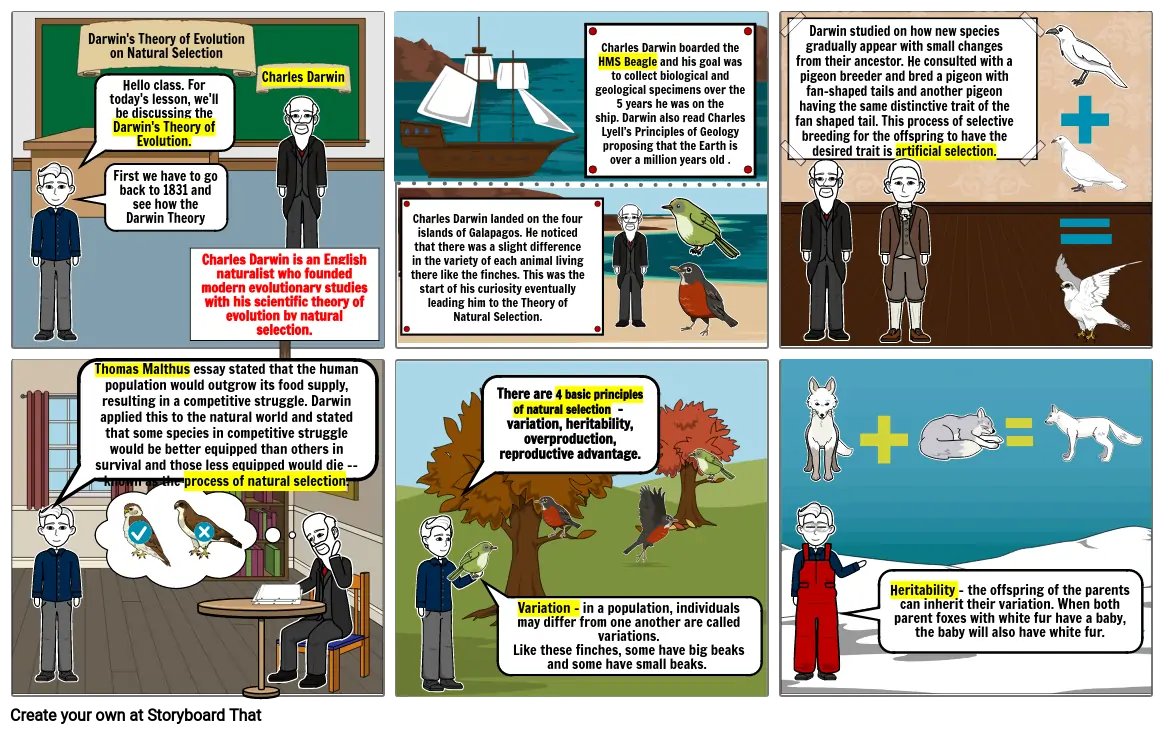Darwin Theory of evolution

Texto del Guión Gráfico
- First we have to go back to 1831 and see how the Darwin Theory came to be.
- Darwin's Theory of Evolution on Natural Selection
- Hello class. For today's lesson, we'll be discussing the Darwin's Theory of Evolution.
- Charles Darwin is an English naturalist who founded modern evolutionary studies with his scientific theory of evolution by natural selection.
- Charles Darwin
- Charles Darwin landed on the four islands of Galapagos. He noticed that there was a slight difference in the variety of each animal living there like the finches. This was the start of his curiosity eventually leading him to the Theory of Natural Selection.
- Charles Darwin boarded the HMS Beagle and his goal was to collect biological and geological specimens over the 5 years he was on the ship. Darwin also read Charles Lyell’s Principles of Geology proposing that the Earth is over a million years old .
- Darwin studied on how new species gradually appear with small changes from their ancestor. He consulted with a pigeon breeder and bred a pigeon with fan-shaped tails and another pigeon having the same distinctive trait of the fan shaped tail. This process of selective breeding for the offspring to have the desired trait is artificial selection.
- Thomas Malthus essay stated that the human population would outgrow its food supply, resulting in a competitive struggle. Darwin applied this to the natural world and stated that some species in competitive struggle would be better equipped than others in survival and those less equipped would die -- known as the process of natural selection.
- love
- There are 4 basic principles of natural selection - variation, heritability, overproduction, reproductive advantage.
- Variation - in a population, individuals may differ from one another are called variations.Like these finches, some have big beaks and some have small beaks.
- Heritability - the offspring of the parents can inherit their variation. When both parent foxes with white fur have a baby, the baby will also have white fur.
Más de 30 millones de guiones gráficos creados
¡Sin Descargas, sin Tarjeta de Crédito y sin Necesidad de Iniciar Sesión Para Probar!
